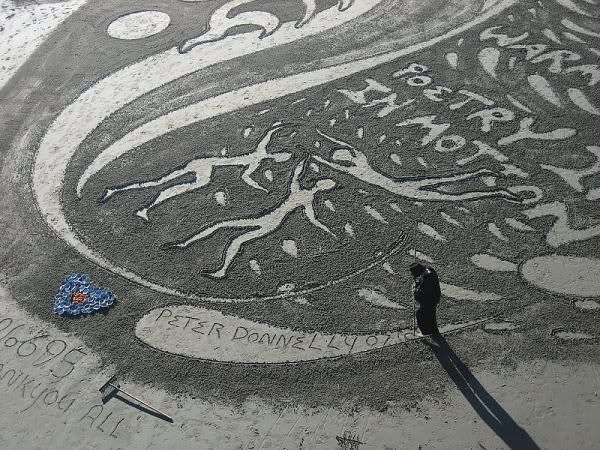Τρίτη 28 Σεπτεμβρίου 2010
Θεός αν είναι...
Ξέρετε τι είναι ο Θεός; Ο Θεός είναι όλα και τίποτα. Εφόσον η τελειότητα που δημιούργησαν οι άνθρωποι δεν μπορεί να είναι παρά το τίποτα... Θέλησαν να δώσουν ένα όνομα στο τίποτα και το έκαναν κάτι. Όπως εσύ, που διαβάζεις αυτές τις γραμμές... Ο καπνός από το τσιγάρο σου δεν είναι τίποτα, είναι καπνός όμως, όπως κι ο Θεός, που είναι το τίποτα, δεν είναι πια τίποτα όμως από τη στιγμή που είναι ο Θεός. Θα μπορούσε κάποιος να είναι Θεός για τους ανθρώπους, έχουμε πολλά παραδείγματα... Οι άνθρωποι έχουν ανάγκη να δίνουν ένα σώμα στο τίποτα για να μπορούν να το βλέπουν και να το αγγίζουν, τουλάχιστον με τη φαντασία τους, για να μπορούν να το ζωγραφίζουν στους καμβάδες, να το σμιλεύουν στα μάρμαρα και στις πέτρες, να τον περι-γράφουν στα χαρτιά και, λίγο-λίγο θα αντιληφθείτε πως ο Θεός έχει μια μύτη σαν τη δική σας κι ένα μαντίλι να τη φυσάει όταν είναι κρυωμένος κι ένα στόμα με το οποίο στο τέλος θα σας πει ένα σωρό βλακείες, ό,τι σας αρέσει ή σας βολεύει και πόδια για να πηγαίνει όπου εσείς θα θέλατε να πάτε, αυτιά για να κάθεται και ν' ακούει τις χαζομάρες που σας έρχονται στο νου. Κι αφού πια τον έχουν κάνει μικρό, πολύ μικρούλη, σαν ψείρα, όπως τους εαυτούς τους, δεν τους αρέσει άλλο... Οι άνθρωποι προσεύχονται στο Θεό ξέρετε γιατί; Για να τους κρατάει όσο το δυνατόν μακρύτερα από αυτόν. Εάν ο Διάβολος βρισκόταν επί της Γης, θα ήταν αυτός ο Θεός τους... (Μα, τι λέω, όλοι μας, καθημερινά, στέλνουμε πολλούς σ' αυτόν...) Δεν θα ήθελαν άλλον και θα ζητούσαν να μείνουν μαζί του αιωνίως, κι αν τους έκανε και τα χατίρια,... δεν χωρεί αμφιβολία περί τούτου! Μη δίνετε σημασία, ΠΡΟΣΕΥΧΟΜΑΙ!!!
Κυριακή 26 Σεπτεμβρίου 2010
Κλασσικά Εικονογραφημένα

Τα Κλασσικά Εικονογραφημένα είναι σειρά κόμικς, που διασκευάζουν γνωστά έργα της παγκόσμιας λογοτεχνίας. Η σειρά κυκλοφόρησε στην Ελλάδα το 1951 από τις εκδόσεις Πεχλιβανίδη, βασισμένη στην αντίστοιχη αμερικάνικη, και από τότε γνωρίζει συνεχείς ανατυπώσεις. Χαρακτηριστικό της ελληνικής έκδοσης ήταν η προσαρμογή θεμάτων ελληνικού ενδιαφέροντος, για την απόδοση των οποίων δούλεψαν γνωστοί Έλληνες εικαστικοί και λογοτέχνες. Τα Κλασσικά Εικονογραφημένα αποτέλεσαν μέρος της πολιτιστικής ζωής της χώρας για περίπου δυο δεκαετίες, και σύντροφο της παιδικής και νεανικής ηλικίας χιλιάδων Ελλήνων. Σήμερα οι πρώτες εκδόσεις αποτελούν συλλεκτικά αντικείμενα.
Classics Illustrated
Η αρχική ιδέα για το εγχείρημα της διασκευής κλασσικών έργων της λογοτεχνίας σε κόμικς ανήκε στον Άλμπερτ Κάντερ (Albert Lewis Kanter). Τα αμερικανικά Κλασσικά κυκλοφόρησαν με πρώτο τεύχος τους Τρεις Σωματοφύλακες, τον Οκτώβριο του 1941, στον εκδοτικό οίκο Elliot, και με την αρχική ονομασία Classic Comics. Με το τέταρτο τεύχος, τον Τελευταίο των Μοϊκανών, ο Κάντερ μετέφερε την έκδοση σε δική του εκδοτική εταιρία, με την επωνυμία Gilberton Publishing Co. Το 1947, κι ενώ η σειρά είχε φτάσει τα 34 τεύχη, η ονομασία άλλαξε σε Classics Illustrated, ενώ τον επόμενο χρόνο μειώθηκαν και οι σελίδες σε 48 από 56 (64 πριν τον πόλεμο). Εκδόθηκε επίσης και το Classics Illustrated Junior, με παραμύθια και ιστορίες για μικρότερα παιδιά. Γνωστοί εικονογράφοι και σχεδιαστές από το χώρο των κόμικς όπως οι Λου Κάμερον, Τζακ Κέρμπυ, Άλεξ Μπλουμ, Νόρμαν Νόντελ, Τζακ Άμπελ και άλλοι ήταν οι υπεύθυνοι για την οπτική απόδοση των μυθιστορημάτων.
Το κόμικ συνέχισε να εκδίδεται μέχρι το 1962, οπότε και σταμάτησε μετά από 169 τεύχη (167 του Κάντερ και 2 από άλλο εκδότη) και 200 εκατομμύρια συνολικές πωλήσεις στις ΗΠΑ. Συνέχισε να ανατυπώνεται, και τις επόμενες δεκαετίες έγιναν κάποιες -όχι επιτυχημένες- προσπάθειες να συνεχιστεί η σειρά. Τα αμερικανικά κλασσικά μεταφράστηκαν και εκδόθηκαν σε πολλές χώρες, μεταξύ των οποίων, αρχής γενομένης το 1951, ήταν και η Ελλάδα.
Αδελφοί Πεχλιβανίδη
Οι Μικρασιάτες αδελφοί Πεχλιβανίδη (Μιχάλης, Κώστας και Γιώργος) είχαν μακρά θητεία, από τα μέσα της δεκαετίας του '20, στον τομέα των εκτυπώσεων (κυρίως των διαφημιστικών) αλλά και των παιδικών βιβλίων, που άρχισαν να εκδίδουν μετά και τις σπουδές, το 1936, του Κώστα Πεχλιβανίδη στη Λειψία πάνω στις σύγχρονες -τότε- τεχνικές εκτύπωσης. Έχοντας κληρονομήσει το τυπογραφείο αλλά και την εμπειρία του Βαυαρού λιθογράφου Γρούνδμαν, και έχοντας δουλέψει για χρόνια την τεχνική του όφσετ, οι αδελφοί Πεχλιβανίδη, ήδη υπολογίσιμο όνομα στο χώρο των εκτυπώσεων, ίδρυσαν μετά τον πόλεμο τις "εκδόσεις Ατλαντίς" με σκοπό να επανέλθουν στο παιδικό βιβλίο. Στα Classics Illustrated του Κάντερ, με τα οποία γνωρίστηκαν κατά τη διάρκεια ενός ταξιδιού στην Αμερική, αναγνώρισαν μια γνήσια ευκαιρία, και αποφάσισαν να τα τυπώσουν και στην Ελλάδα.
Οι Άθλιοι από την Αμερική
Το πρώτο τεύχος των "Κλασσικών" κυκλοφόρησε στις 1 Μαρτίου του 1951. Ήταν η διασκευή των Άθλιων του Βίκτωρα Ουγκώ, και προκάλεσαν σάλο στην Ελλάδα, τόσο θετικό όσο και αρνητικό. Ήταν το πρώτο κόμικ "αμερικάνικου" τύπου που έφτανε στη χώρα (που εκείνη την περίοδο περνούσε μια φάση γενικότερης "εισβολής" αμερικανικών καταναλωτικών αγαθών), όπως και το πρώτο που έβγαινε σε τετραχρωμία όφσετ ("με 336 πολύχρωμες εικόνες", όπως έγραφε το εξώφυλλο). Κόστιζε 4.000 δραχμές της τότε εποχής, και η πρώτη έκδοση (90.000 αντίτυπα) εξαντλήθηκε σε ελάχιστο χρόνο, και ανατυπώθηκε δυο φορές τις επόμενες μέρες (σύμφωνα με την "Ατλαντίδα", πούλησε γύρω στο ένα εκατομμύριο αντίτυπα). Η πολύ προσεγμένη τους εκτύπωση, η τετραχρωμία, αλλά και το πρωτοφανές ενός αναγνώσματος όπου οι φυσαλίδες αυτές σημαίνουν ότι το πρόσωπο από το οποίο βγαίνουν δεν λέει τα λόγια που γράφει η λεζάντα αλλά τα σκέπτεται (κατά τις "οδηγίες χρήσης" των πρώτων τευχών), καθιέρωσαν σχεδόν αμέσως το περιοδικό στο νεανικό αλλά και μεγαλύτερο κοινό.
Η κυκλοφορία των "Κλασσικών" στην Ελλάδα, παρά την επιτυχία της, προκάλεσε και αντιδράσεις από ανθρώπους της τέχνης και της πολιτικής (μεταξύ άλλων ο Ε. Παπανούτσος). Πολλοί θεώρησαν "ευτελισμό" των κλασσικών έργων την ανατύπωσή τους σε κόμικς, άλλοι φοβούνταν την "αμερικανοποίηση" της παιδείας των νέων, και το θέμα προκάλεσε συζητήσεις ακόμα και μέσα στη Βουλή. Παρόλα αυτά, το κοινό αγκάλιασε την έκδοση, που έγινε μια από τις πιο επιτυχημένες στα μεταπολεμικά χρόνια.
Επιτυχία
Η έκδοση των "Κλασσικών" συνεχίστηκε για περίπου δέκα χρόνια, σε σταθερούς ρυθμούς. Κυκλοφόρησαν, στα πλαίσια της πρώτης σειράς, γύρω στους 180 τίτλους, από τους οποίους περίπου εξήντα ήταν με ελληνικά θέματα. Το περιοδικό κυκλοφορούσε αρχικά κάθε δυο βδομάδες, την 1η και 15η, του μήνα σε χιλιάδες αντίτυπα σε όλη την Ελλάδα (σύμφωνα με δηλώσεις των εκδοτών, με μέσο όρο 200.000-300.000 πωλήσεις σε κάθε τεύχος). Σαρώνοντας την αγορά, τα Κλασσικά υποχρέωσαν άλλα περιοδικά για παιδιά (όπως ο Θησαυρός των Παιδιών) να κλείσουν. Παράλληλα με τα "Κλασσικά Εικονογραφημένα", κυκλοφόρησαν και τα "Μικρά Κλασσικά Εικονογραφημένα" (κατά τα πρότυπα των Classics Illustrated Junior για τους μικρότερους.
Τα σχέδια ήταν σχεδόν πιστή αντιγραφή της αμερικάνικης έκδοσης, ενώ τα κείμενα μετέφραζε συνήθως ο Βασίλης Ρώτας (που είχε και την κύρια ευθύνη της ελληνικής σειράς). Η θεματολογία της πρώτης έκδοσης, ακολουθώντας αναγκαστικά αυτή της αμερικάνικης, περιελάμβανε κυρίως μυθιστορήματα με κοινωνικό-διδακτικό χαρακτήρα (όπως Όλιβερ Τουίστ, Τζέκυλ και Χάϊντ, Μεγάλες Προσδοκίες), ρομαντικά-ιπποτικά μυθιστορήματα, αρκετά έργα του Βίκτωρα Ουγκώ και του Ιουλίου Βερν αλλά και βιογραφίες "μεγάλων ανδρών" (Καίσαρας, Αβραάμ Λίνκολν κ.α.). Ο υπότιτλος "Από τα Αριστουργήματα των Μεγαλύτερων Συγγραφέων του Κόσμου" μάλλον ήταν λίγο γενικός, μια και η σειρά έδειχνε προτίμηση σε Γάλλους και Άγγλους συγγραφείς του 19ου αιώνα. Το περιοδικό, εκτός από τα μυθιστορήματα, περιελάμβανε και κάποιες σελίδες με βιογραφίες ιστορικών προσώπων ή εφευρετών, επετειακά και διδακτικά θέματα, διαφημίσεις της "Ατλαντίδας" αλλά και στήλη αναγνωστών για κάποιο διάστημα.
Από τη μυθολογία και την ιστορία της Ελλάδος

Μετέπειτα χρόνια Τα Κλασσικά Εικονογραφημένα, αν και πολύ δημοφιλή στις δεκαετίες 1950-1960, άρχισαν στα επόμενα χρόνια να χάνουν σταδιακά το κοινό τους, λόγω της ολοένα μεγαλύτερης απήχησης άλλων αμερικάνικων κόμικς -των οποίων υπήρξαν προπομπός στην Ελλάδα- αλλά και της εξέλιξης της ελληνικής κοινωνίας. Συνεχίζουν πάντως να υφίστανται και να πωλούνται ακόμα και σήμερα, περισσότερο από μισό αιώνα μετά την πρώτη τους έκδοση, τα τεύχη της οποίας έχουν γίνει συλλεκτικά αντικείμενα. Στα τέλη της δεκαετίας του '60 κυκλοφόρησαν λίγοι ακόμα τίτλοι, και άλλη μια σειρά τυπώθηκε τη δεκαετία του '70, ενώ οι προηγούμενοι τίτλοι συνεχώς ανατυπώνονταν όλα αυτά τα χρόνια. Νέα ανατύπωση έγινε και στις αρχές της δεκαετίας του '90, ενώ το 2001 τα τεύχη ελληνικής θεματολογίας επανεκδόθηκαν σε θεματικούς τόμους.
Τα "Κλασσικά Εικονογραφημένα" επικρίθηκαν για την αμερικανική τους προέλευση και θεώρηση της κλασσικής λογοτεχνίας, αλλά και για την μονοκρατορία τους στο χώρο των ελληνικών κόμικς για περίπου είκοσι χρόνια. Παρόλα αυτά, αποτέλεσαν ένα από τα πιο αναγνωρίσιμα αντικείμενα μαζικής κουλτούρας στις δεκαετίες 1950-1960, μια από τις απαρχές της ελληνικής σκηνής των κόμικς, και συνεχίζουν να κρατούν μια καλή θέση στις αναμνήσεις αρκετών.
Κατάλογος τευχών
Ο κατάλογος περιλαμβάνει τους τίτλους των τευχών των "Κλασσικών" της πρώτης κυκλοφορίας (1951- περ. 1960) με τη σειρά που εκδόθηκαν .
Kλασσικά εικονογραφημένα από τη Βικιπαίδεια
Τα "Κλασσικά Εικονογραφημένα" επικρίθηκαν για την αμερικανική τους προέλευση και θεώρηση της κλασσικής λογοτεχνίας, αλλά και για την μονοκρατορία τους στο χώρο των ελληνικών κόμικς για περίπου είκοσι χρόνια. Παρόλα αυτά, αποτέλεσαν ένα από τα πιο αναγνωρίσιμα αντικείμενα μαζικής κουλτούρας στις δεκαετίες 1950-1960, μια από τις απαρχές της ελληνικής σκηνής των κόμικς, και συνεχίζουν να κρατούν μια καλή θέση στις αναμνήσεις αρκετών.
Κατάλογος τευχών
Ο κατάλογος περιλαμβάνει τους τίτλους των τευχών των "Κλασσικών" της πρώτης κυκλοφορίας (1951- περ. 1960) με τη σειρά που εκδόθηκαν .
| 1. Οι Άθλιοι 2. Όλιβερ Τουίστ 3. Νήσος των θησαυρών 4. Η καλύβα του Μπάρμπα-Θωμά 5. Ο Ρομπέν των Δασών 6. Η Παναγία των Παρισίων 7. Ιούλιος Καίσαρ 8. Πρίγκηψ και Φτωχός 9. Μιχαήλ Στρογκώφ 10. Τα ταξίδια του Γκιούλιβερ 11. Σιδηρούν Προσωπείον 12. Δον Κιχώτης 13. Τομ Σώγιερ 14. Ο γύρος του κόσμου σε 80 ημέρες 15. Η Αλίκη στη Χώρα των Θαυμάτων 16. Τζέιν Έϋρ 17. Οι Τρεις Σωματοφύλακες 18. Οι περιπέτειες του Μάρκο Πόλο 19. Ιωάννα Ντ' Αρκ 20. Ιστορία Δυο Πόλεων 21. Η κυρά της λίμνης 22. Χριστουγεννιάτικη Ιστορία 23. Το κλεμμένο παιδί 24. Δαυΐδ Κόππερφηλντ 25. Ο Αιχμάλωτος της Ζέλντα 26. Βενιαμίν Φραγκλίνος 27. Συρανό Ντε Μπερζεράκ 28. Ο άνθρωπος χωρίς πατρίδα 29. Ένας Γιάνκης του Κοννέκτικατ 30. Οι τελευταίες ημέρες της Πομπηίας 31. Μεγάλες προσδοκίες 32. Το σπίτι με τα επτά αετώματα 33. Όνειρο θερινής νύχτας 34. Είκοσι χιλιάδες λεύγες υπό την θάλασσα 35. Τα σχολικά χρόνια του Τομ Μπράουν 36. Σιδερόφρακτοι ιππότες 37. Ο πύργος των καταιγίδων 38. Οι εργάτες της θαλάσσης 39. Σίλας Μάρνερ 40. Το τραγούδι του Χιαγουάθα 41. Η μυστηριώδης νήσος 42. Λόρνα Ντουν 43. Περσέας και Ανδρομέδα 44. Οικογένεια Ελβετών Ροβινσώνων 45. Η γυναίκα με τα άσπρα 46. Μαύρη Καλλονή 47. Σκωτσέζοι αρχηγοί 48. Ομήρου Ιλιάς 49. Ροβινσών Κρούσος 50. Μετά είκοσι έτη 51. Ο πιλότος 52. Ο δόκιμος Ήζυ 53. Η λεωφόρος του Όρεγκον 54. Ο θαλασσόλυκος | 55. Κολοκοτρώνης 56. Άμλετ 57. Υπό δύο σημαίας 58. Ο άνθρωπος που γελά 59. Ιστορία της Δύσεως 60. Κωνσταντίνος Παλαιολόγος 61. Ο ελαφοκυνηγός 62. Το λιβάδι 63. Μυστήρια των Παρισίων 64. Ιβανόης 65. Τζέκυλ και Χάιντ 66. Ο Θησέας και ο Μινώταυρος 67. Ντάνιελ Μπουν 68. Οι αρραβώνες του Μάιλς Στάντις 69. Ο πατριώτης 70. Μοναστήρι και σπίτι 71. Ομήρου Οδύσσεια 72. Οι σκαπανείς 73. Γουλιέλμος Τέλλος 74. Από τη Γη στη Σελήνη 75. Μαύρη Τουλίπα 76. Χωκ Φιν 77. Ο κόμης Μοντεχρήστος 78. Η φεγγαρόπετρα 79. Δαυΐδ Μπάλφουρ 80. Δυο χρόνια στην πλώρη 81. Οι περιπέτειες του Τσελλίνι 82. Σέρλοκ Χολμς 83. Ο Ηρακλής 84. Το Μαύρο Βέλος 85. Τύπη 86. Η κόρη της ζούγκλας 87. Χίλιες και μια νύχτες 88. Προς τη Δύση 89. Ο άρχων του Μπαλλαντρέ 90. Ριχάρδος ο Λεοντόκαρδος 91. Ανάμεσα στα θηρία 92. Μπούφφαλο Μπιλ 93. Οι Κορσικανοί αδελφοί 94. Ριπ Βαν Ουίνκλ 95. Κανάρης ο πυρπολητής 96. Οι ιππότες της Στρογγυλής Τραπέζης 97. Αναζητώντας τον Λίβινγκστων 98. Διπλή επιτυχία 99. Το σήμα του θάρρους 100. Το Χάνι της Γραβιάς 101. Ο ελαφρόμυαλος Ουΐλσον 102. Το λυκόσκυλο 103. Ο αρχηγός των τυφεκιοφόρων 104. Ο ιχνηλάτης 105. Ο Μέγας Αλέξανδρος 106. Ο Ασπροδόντης 107. Η Καταιγίδα 108. Ρομπ Ροϋ 109. Στρατιώτες της τύχης 110. Ο τολμηρός Μπιλ Χικόκ 111. Ναυτική ανταρσία 112. Ρήγας Φερραίος 113. Δαίμονες των κυμάτων 114. Κιτ Κάρσον 115. Βασίλειος ο Βουλγαροκτόνος 116. Ερρίκος ο Γ΄ 117. Ο Κόκκινος πειρατής 118. Έγκλημα και τιμωρία 119. Αθανάσιος Διάκος 120. Ο Ερωτόκριτος 121. Ο πόλεμος των κόσμων 122. Η μηχανή που τρέχει μέσα στα χρόνια 123. Ρωμαίος και Ιουλιέττα 124. Βατερλώ 125. Η μάχη του Μαραθώνα 126. Ιφιγένεια εν Αυλίδι 127. Η θυσία του Αβραάμ 128. Η μάχη στις Θερμοπύλες 129. Ο μικρός άγριος 130. Η ναυμαχία της Σαλαμίνας 131. Ταξίδι στο κέντρο της γης 132. Ο Μέγας Κωνσταντίνος 133. Μακβέθ 134. Το πνεύμα της μποτίλιας 135. Στα μονοπάτια της ζούγκλας 136. Ο βασιλεύς των Ορέων 137. Οι πρώτοι άνθρωποι στο φεγγάρι 138. Ντέιβιντ Κρόκετ 139. Η πτώσις 140. Οι κατακτήσεις του Καίσαρος 141. Το σκεπαστό αμάξι 142. Αβραάμ Λίνκολν |
Kλασσικά εικονογραφημένα από τη Βικιπαίδεια
The Ark of the Covenant
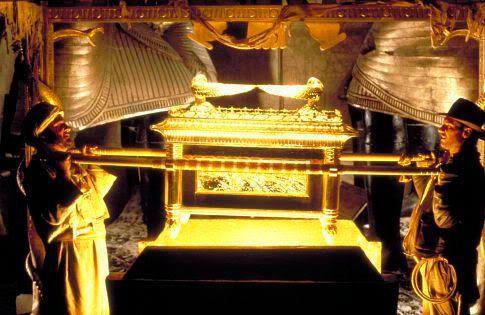
The Ark of the Covenant is described in the Bible as a sacred container, wherein rested the Tablets of stone containing the Ten Commandments as well as other sacred Israelite pieces. According to the Biblical account, the Ark was built at the command of God, in accord with Moses' prophetic vision on Mount Sinai (Exodus 25:9-10). God communicated with Moses "from between the two cherubim" on the Ark's cover (Exodus 25:22). The Ark and its sanctuary were "the beauty of Israel" (Lamentations 2:1). Rashi and some Midrashim suggest that there were two arks - a temporary one made by Moses, and a later one made by Bezalel (Hertz 1936)
The Biblical account relates that during the trip of the Israelites, the Ark was carried by the priests ~2,000 cubits (Numbers 35:5; Joshua 4:5) in advance of the people and their army or host (Num. 4:5-6; 10:33-36; Psalms 68:1; 132:8). When the Ark was borne by priests into the bed of the Jordan, the river was separated, opening a pathway for the whole of the host to pass over (Josh. 3:15-16; 4:7-18). The Ark was borne in a seven day procession around the wall of Jericho by three priests sounding seven trumpets of rams' horns, the city taken with a shout (Josh. 6:4-20). When carried, the Ark was always wrapped in a veil, in tachash skins (the identity of this animal is uncertain), and a blue cloth, and was carefully concealed, even from the eyes of the Levites who carried it.
No ancient relic causes so much controversy as the Ark of the Covenant. The subject of Spielberg’s ‘Raiders of the Lost Ark’, featuring the intrepid Indiana Jones, the film does not exaggerate the passions the mystery of its location and power entails. Believed to have been constructed from acacia wood by Moses on Mount Sinai about 1250BC, the wooden chest is overlain with solid gold on both the inside and outside. 3ft 9in long and 2ft 3in wide and high, it has a lid of solid gold with a pair of cherubim. Gold rings attached to the Ark’s sides allow poles to pass through to be carried.
WHY AN ARK?
Built according to Divine instructions, the Ark carried the two tablets upon which God scribed the Ten Commandments. Symbolic of the covenant God made between Himself and the people of Israel, it was said to be the focus of God’s presence. Carried by Levites, members of one of the twelve tribes of Israel, it always went ahead of the Israelites as they wandered through the desert, even going ahead of their armies as they waged war. When camped, the Ark was placed at the centre of a temporary sanctuary known as the Tabernacle. This centre became known as the Holy of Holies. Once the Promised Land was conquered and the Temple constructed at Jerusalem, the Ark was placed in the Holy of Holies of the temple. In this respect we can see the Ark as the central symbol of faith. Some mystical Jews have even drawn an analogy of the Ark, with its two tablets inside, with the brain and its two cerebral hemispheres. The Ark remained the centre of their religion until after the Exile to Babylon in the 6th century BC.
OBJECT OF MYSTERY
Today there are two central mysteries concerning the Ark of the Covenant - namely, where is it, and what strange powers did it have? The former enigma comes from its remarkable history. According to the Old Testament, some time around 1000BC the Ark was captured by the Philistines. For reasons we will narrate later, they eventually let it go, sending it away strapped to a cart pulled by two cows. Reclaimed by the Israelites, they took it to Kiriath¬ Jearim, with King David eventually taking it to Jerusalem. Here, in 955BC, King Solomon placed it in the Holy of Holies of the first Temple. At one stage one tradition speaks of it being stolen by Menelik, son of Solomon and Sheba and taken to Axum in Ethiopia. Another tradition speaks of it being taken by the prophet Jeremiah to an unknown cave prior to the Babylonian destruction of the Temple in 587BC. What exactly happened is not known - it could have been simply destroyed - but the Ark was never seen again.
WHERE IS IT?
There are several theories concerning the location of the Ark. In 1952 a scroll known as the Copper Scroll was found near the caves at Qumran where the famous Dead Sea Scrolls were found. The scroll purportedly contains a list of sacred items that used to reside in Herod the Great’s second Temple, destroyed by the Romans in 70AD. Among the listed items, it is thought, is the Ark. This discovery eventually fascinated American archaeologist Vendyl Jones. As director of the Institute for Judaic Christian Rsearch in Texas, Jones, who claims to be the real Indiana Jones, led an expedition to the area in March 1992. Claiming to have unearthed incense from the Temple, in May the Israeli Antiquities Authority suddenly stopped the excavation without explanation. Could the Ark be buried near Qumran? Graham Hancock thinks not. According to him, the Ark remained in the Temple at Jerusalem until about 650BC.
CHURCH OF ST MARY
At this time Judea was ruled by a pagan king called Manasseh. Fearing he would destroy the Ark, the priests clandestinely removed it to a new temple in Elephantine in Egypt. In 410BC this temple was destroyed. Rescued, Hancock claims the Ark was taken to Lake Tana in Ethiopia, and in 350AD to Axum. Being placed in a specially constructed Church of St Mary of Zion, except for minor removals during medieval times, it has remained there ever since. To this day the church is guarded by a single monk known as the guardian of the Ark, spending his entire lifetime protecting the relic and allowing no one inside. Whether the real Ark is really in the church, no one knows, but certainly a replica of the Ark exists here, and is carried in procession once a year during the feast of Timkat. However, apart from the mystery of its location, just as intriguing are powers that are said to be invested in the Ark.
REMARKABLE POWERS
The Old Testament speaks clearly of the Divine power of the Ark. When captured by the Philistines, they quickly got rid of it when they came down with a terrifying plague which caused cancerous tumours. At Jericho the Ark was marched around the walls, and it is said to have been its power that caused the walls to fall down. Others who inadvertently touched it were instantly killed, and only a chosen few could manage to carry it on its poles, well over a hundred yards ahead of the people. Moses himself is said to have had a face that shined, and usually wore a cowl, after building the Ark. Due to such powers, many theories have been offered as to what the Ark really was. Some even believe it was actually a small nuclear reactor, hence the cancerous boils, Moses’s ‘radiation effects’ and its seemingly miraculous power.
POWERS EXPLAINED?
Of course, easy answers can be placed on the powers of the Ark. It is well accepted that the walls of Jericho fell due to earthquake activity. Similarly, belief in its power was all that was needed for the Philistines to imagine disaster, possibly even causing some form of hysterically induced poltergeist activity. As for the dangers of boils from being too close to the Ark, suggestion can easily cause illness in such a superstitious culture. Curses are known to happen in many primitive societies, based on the absolute belief that a curse can work. But all this is irrelevant to the real power of the Ark. Thought of as the throne for the earthly power of an invisible God, it represented the very centre of faith to the people who birthed the idea of monotheism. In this, sense, whether real or imagined, the Ark of Covenant remains an icon of world-changing proportions. And there is no greater power than this.
http://en.wikipedia.org/wiki/Ark_of_the_Covenant
Πέμπτη 23 Σεπτεμβρίου 2010
Papillon
Οι άνθρωποι πεθαίνουν τη χειρότερη στιγμή της ζωής τους; Ή μήπως ο θάνατος είναι η χειρότερη στιγμή της ζωής τους;
Το μυστήριο της ζωής και του θανάτου κανείς δεν μπόρεσε ποτέ να το αποκαλύψει. Ξέρουμε μονάχα ότι κανείς δεν ήθελε να πεθάνει.(εκτός από μερικές εξαιρέσεις). Ο θάνατος είναι εκείνη η στιγμή κατά την οποία οι άνθρωποι λαχταρούν περισσότερο να ζήσουν. Είναι η μεγάλη πύλη της ζωής, αλλά μόλις φτάσουν σ' αυτήν, καίγονται από τη θερμότητα. Εάν ένας από αυτούς μπορούσε να γυρίσει πίσω, θα σας έλεγε τι είναι η ζωή και το άγνωστο μυστήριο της. Κι ίσως να ρωτούσε εσάς τι είναι το μυστήριο του θανάτου...
Παρασκευή 17 Σεπτεμβρίου 2010
Spear of Destiny
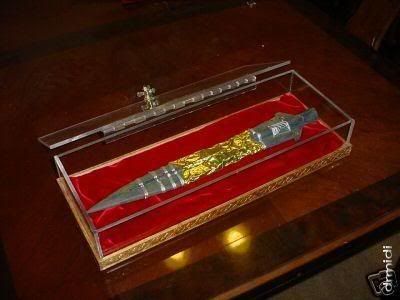
The Holy Lance (also known as the Spear of Destiny, Holy Spear, Lance of Longinus, Spear of Longinus or Spear of Christ) is the name given to the lance that pierced Jesus's side as he hung on the cross in John's account of the Crucifixion.
The Spear of Destiny, is in Christian tradition the spear that the Roman soldier Longinus thrust into the side of Jesus (c. 6 B.C.E.–c. 30 C.E.) as he hung on the cross. (“Then came the soldiers and brake the legs of the first and of the other which was crucified with him. But when they came to Jesus and saw that he was dead already, they brake not his legs: But one of the soldiers with a spear pierced his side and forthwith came out blood and water” [John 19: 32–34 KJV]).
Christian knights discovered the Holy Lance at Antioch during the First Crusade in 1098. The sight of the sacred artifact in the Church of St. Peter so inspired the beleaguered Christian soldiers that they rallied and routed the Saracens from the city. From that time forth, according to legend, whoever claims the spear and solves its secret holds the destiny of the world in his hands for good or evil. Although there are a number of relics in various European churches that claim to be the genuine Holy Lance, the spear that is on display in the Weltliches Schatzkammer Museum (the Hapsburg Treasure House Museum) in Vienna has been considered the most authentic and it has found a home there for 250 years. It is also known as Constantine’s Lance, and it was employed as a symbol of the imperial power of Holy Roman emperors at the time of their coronation in much a similar manner as the orb and scepter are used in the coronation of the monarchs of Great Britain.
According to Trevor Ravenscroft in The Spear of Destiny (1997), a 19-year-old Adolf Hitler (1889–1945) was first led to the lance in 1908 and from the moment of his first encounter with it in the museum, it became “the central pivot” in his life and the “very source of his ambitions to conquer the world.” In addition to Constantine (d. 337), Hitler found that as many as 45 emperors had owned the lance before the great Charlemagne (742–814) had possessed it. Frederick the Great of Germany (1194–1250), who founded the Teutonic Knights on which Hitler allegedly based his SS, had also been an owner of the Spear of Destiny at one time. Ravenscroft claimed in his book that Hitler would often visit the museum, stare at the Holy Lance, and enter into a trance state in which he would view his future glory as the master of the Third Reich.
Thirty years later, on March 14, 1938, Hitler arrived in Vienna to oversee the annexation of Austria. He also observed the transfer of the Hapsburg Crown Jewel collection, which included the Holy Lance, from Vienna to Nuremberg, the Nazis’ favorite city. With the Spear of Destiny now safely ensconced in Germany, Hitler declared that the war could begin in earnest. The lance would be well protected in the hall of St. Katherine’s Church, where it had once rested for nearly 400 years. However, later in the war when Allied bombers damaged a portion of St. Katherine’s, the many treasures looted by the Nazis and stored there were taken to another hiding place. In the chaos and confusion, the Holy Lance was inadvertently left behind.
The Spear of Destiny fell into the hands of U.S. soldiers on April 30, 1945. A few hours after the Holy Lance passed from Nazi possession on to its next claimant to world power, Adolf Hitler committed suicide in his Berlin bunker. Later, the United States officially returned the Holy Lance to Austria, alongwith the other treasures that the Nazis had stolen. Today, the Spear of Destiny stands again in the Hapsburg Treasure House Museum in Vienna.
The Power of the Spear
Everyone knows that Jesus was pierced in the side with a Spear of some sort. It is usually assumed that it was just an ordinary Roman soldier's spear that just happened to be available at the time. Later, it passes into many hands, arriving--supposedly--into Hitler's possession at the start of the Second World War. Near the end of that war, the story goes, General Patton discovers the Spear in a bunker under Nuremberg, realizes what it is, and at that very moment, Hitler commits suicide and the U.S. succeeds Germany as the new World Power...because it now holds the Spear.
That Spear od Destiny has been kept in Vienna, Austria, where Hitler obtained it back in 1938, since shortly after the War. Is Austria now a World Power? It used to be--before the First World War, but no longer. But, of course, some people insist that Austria's Hapsburg family secretly runs the world from behind their gilded walls in Vienna. Maybe. But not very effectively. The fact is, this may not be the true Spear. It could be one of several copies made at various times throughout the centuries.
The real Spear--if the legend of it always being in the possession of the current ruling World Power were true--ought to be in the United States, for the U.S. has emerged as the very greatest World Power in modern history. And what about Judea? The Spear was in Jerusalem for centuries and it does not appear to have made the Jewish people dominant in the ancient world. In fact, they were overrun by just about every one of their neighbors. Come to think of it, Nazi Germany was also conquered when it had the Spear. So was Austria in 1938 and again when the Spear was returned after the war. It may be that having this Spear is a way to get your nation conquered by its neighbors...
So is it possible the Spear has a different function than this notion of designating the current World Power? Is there a deeper, darker secret behind the Spear? Just where did it really come from? There are a myriad of questions swirling about this old relic, which has witnessed the whole pageant of our human history.
Various Relics Claimed to be the Holy Lance
There have been many relics that are claimed to be the Holy Lance, or parts of it.
Vatican Lance
No actual lance is known until the pilgrim Antoninus of Piacenza (AD/Crystalinks/Conspiracies html/speardestiny.html 570), describing the holy places of Jerusalem, says that he saw in the Basilica of Mount Zion "the crown of thorns with which Our Lord was crowned and the lance with which He was struck in the side". A mention of the lance also occurs in the so-called Breviarius at the Church of the Holy Sepulchre. The presence in Jerusalem of this important relic is attested by Cassiodorus (c. 485 - c. 585) as well as by Gregory of Tours (c. 538 594), who had not actually been to Jerusalem.
In 615 Jerusalem and its relics were captured by the Persian forces of King Khosrau II (Chosroes II). According to the Chronicon Paschale, the point of the lance, which had been broken off, was given in the same year to Nicetas, who took it to Constantinople and deposited it in the church of Hagia Sophia, and later to the Church of the Virgin of the Pharos.
This point of the lance, which was now set in an icon, was sold in 1244 by Baldwin II of Constantinople to Louis IX of France, and it was enshrined with the Crown of Thorns in the Sainte Chapelle in Paris. During the French Revolution these relics were removed to the Bibliothèque Nationale but subsequently disappeared. (The present "Crown of Thorns" is a wreath of rushes.)
As for the larger portion of the lance, Arculpus claimed he saw it at the Church of the Holy Sepulchre around 670 in Jerusalem, but there is otherwise no mention of it after the sack in 615. Some claim that the larger relic had been conveyed to Constantinople sometime during the 8th century, possibly at the same time as the Crown of Thorns. At any rate, its presence at Constantinople seems to be clearly attested by various pilgrims, particularly Russians, and, though it was deposited in various churches in succession, it seems possible to trace it and distinguish it from the relic of the point. Sir John Mandeville declared in 1357 that he had seen the blade of the Holy Lance both at Paris and at Constantinople, and that the latter was a much larger relic than the former.
Whatever the Constantinople relic was, it fell into the hands of the Turks, and in 1492, under circumstances minutely described in Pastor's History of the Popes, the Sultan Bayazid II sent it to Innocent VIII to encourage the pope to continue to keep his brother and rival Zizim (Cem) prisoner. At this time great doubts as to its authenticity were felt at Rome, as Johann Burchard records, because of the presence of other rival lances in Paris (the point that had been separated from the lance), Nuremberg (see "Vienna lance" below), and Armenia.
In the mid 1700s Benedict XIV states that he obtained from Paris an exact drawing of the point of the Spear od Destiny, and that in comparing it with the larger relic in St. Peter's he was satisfied that the two had originally formed one blade. This relic has never since left Rome, where it is preserved under the dome of Saint Peter's Basilica, although the Roman Catholic Church makes no claim as to its authenticity.
Echmiadzin Lance
The lance currently in Echmiadzin, Armenia, was discovered during the First Crusade. In 1098 the crusader Peter Bartholomew reported that he had a vision in which St. Andrew told him that the Holy Lance was buried in St. Peter's Cathedral in Antioch. After much digging in the cathedral, a lance was discovered. This was considered a miracle by the crusaders who were able to rout the Muslim army besieging the city and decisively capture Antioch. Some Early Modern scholars (e.g. [[Odorico Raynaldi in Annales ecclesiastici and the Bollandists) believed that this lance afterwards fell into the hands of the Turks and was in fact the lance that Bayazid II sent to Pope Innocent and is now in the Vatican.
Vienna Lance (Hofburg spear)
The Holy Roman Emperors had a lance of their own, attested from the time of Otto I (912-973). In 1000 Otto III gave Boleslaw I of Poland a replica of the Lance at the Congress of Gniezno. In 1084 Henry IV had a silver band with the inscription "Nail of Our Lord" added to it. This was based on the belief that this was the lance of Constantine the Great which enshrined a nail used for the Crucifixion.
In 1273 it was first used in the coronation ceremony. Around 1350 Charles IV had a golden sleeve put over the silver one, inscribed "Lancea et clavus Domini" (Lance and nail of the Lord).
In 1424 Sigismund had a collection of relics, including the lance, moved from his capital in Prague to his birth place, Nuremberg, and decreed them to be kept there forever. This collection was called the Reichskleinodien or Imperial Regalia.
When the French Revolutionary army approached Nuremberg in the spring of 1796 the city councilors decided to remove the Reichskleinodien to Vienna for safe keeping. The collection was entrusted to one "Baron von Hügel", who promised to return the objects as soon as peace had been restored and the safety of the collection assured.
However, the Holy Roman Empire was officially dissolved in 1806 and von Hügel took advantage of the confusion over who was the rightful owner and sold the entire collection, including the lance, to the Habsburgs. When the city councilors discovered this they asked for the Reichskleinodien back but were refused. As part of the imperial regalia it was kept in the Schatzkammer (Imperial Treasury) in Vienna and was known as the lance of Saint Maurice.
During the Anschluss, when Austria was annexed to Germany, Adolf Hitler took the lance. It was returned to Austria by American General George S. Patton after World War II and was temporarily stored in the Kunsthistorisches Museum. Currently the Spear is held in the Schatzkammer.
Dr. Robert Feather, an English metallurgist and technical engineering writer, tested the Spear od Destiny in January 2003.[8] He was given unprecedented permission not only to examine the lance in a laboratory environment, but was also allowed to remove the delicate bands of gold and silver that hold it together.
In the opinion of Feather and other academic experts, the likeliest date of the spearhead is the 7th century A.D. - only slightly earlier than the Museum's own estimate. However, Dr. Feather also stated in the same documentary that an iron pin - long claimed to be a nail from the crucifixion, hammered into the blade and set off by tiny brass crosses - is "consistent" in length and shape with a 1st century A.D. Roman nail.
According to Paul the Deacon, the Lombard royal line bore the name of the Gungingi, which Karl Hauck and Stefano Gasparri maintain identified them with the name of Odin¹s lance, Gungnir (a sign that they probably claimed descent from Odin, as did most of the Germanic royal lines) Paul the Deacon also notes that the inauguration rite of a Lombard king consisted essentially of his grasping of a sacred/royal lance.
Milan, which had been the capital of the Western Roman Empire in the time of Constantine, was also the capital of the Lombard kings Perctarit and his son Cunipert, who became Catholic Christians in the 7th century. Thus it seems possible that the iron point of the Lombardic royal lance might have been recast in the 7th century in order to enshrine one of the 1st century Roman nails that St. Helena was reputed to have found at Calvary and brought to Milan, thus giving a new Christian sacred aura to the old pagan royal lance.
If Charlemagne¹s inauguration as the King of the Lombards in 774 had likewise included his grasping of this now-Christianized sacred or royal lance, this would explain how it would have eventually become the oldest item in the German imperial regalia. We might also note that the Iron Crown of Lombardy (dated to the 8th century), which eventually became the primary symbol of Lombardic kingship, takes its name from the tradition that it also contains one of the holy nails.
Alternately, since Gregory of Tours in his Libri Historiarum VII, 33, states that in 585 the Merovingian king Guntram designated his nephew Childebert II his heir by handing him his lance, it is possible that a royal Spear od Destiny was also a symbol of kingship among the Merovingian kings and that a nail from Calvary was in the 7th century incorporated into this royal lance and thus eventually would have come into the German imperial regalia.
Other Lances Another lance has been preserved at Krakow, Poland, since at least the 1200s. However, German records indicate that it was a copy of the Vienna lance. Emperor Henry II had it made with a small sliver of the original lance. Another copy was given to the Hungarian king at the same time. The story told by William of Malmesbury of the giving of the Holy Lance to King Athelstan of England by Hugh Capet seems to be due to a misconception.
http://en.wikipedia.org/wiki/Holy_Lance
ThunderBird!

Thunderbird is a term used in cryptozoology to describe large, bird-like creatures, generally identified with the Thunderbird of Native American tradition. Similar cryptids reported in the Old World are often called Rocs. Thunderbirds are regarded by a small number of researchers as having lizard features like the extinct pterosaurs such as Pteranodon. Although reports of Thunderbird sightings go back centuries, due to the lack of scientific evidence (such as a fossil record), the creature is generally regarded as a myth.
The Thunderbird figures prominently in the traditions of many Native American tribes. For some, it is the flapping of the Thunderbird’s wings that one hears during rainstorms rumbling in the skies and it is the Thunderbird’s eyes and beak that flash the lightning. To the Lakota of the prairie, the Thunderbird is an embodiment of the Great Mystery, the Supreme Being, which created all things on Earth. For the tribes of the Iroquois Confederacy of the northeast, Hino, the Thunderbird, guardian of the skies and the spirit of thunder, could assume the form of a human when it suited its purpose. The cosmology of many of the western tribes establish a Thunderbird in each of the four corners of the world as guardians and protectors, fighting always to keep away evil spirits. Many scholars over the centuries have attributed the Native American myths of the Thunderbird to their reverence for the eagle, the largest of indigenous birds in North America. Interestingly, however, many people have claimed to have seen for themselves a great bird, far larger than the eagle, flying overhead. In fact, even in the nineteenth century, some witnesses were claiming to have seen flying monsters that resembled pterodactyls, the winged reptiles that should have been extinct 60 million years ago. On April 9, 1948, a farm family outside of Caledonia, Illinois, saw a monster bird that they all said was bigger than an airplane. In different parts of the state on the same day, a Freeport truck driver said that he, too, had seen the creature.
The Thunderbird is a legendary creature in certain North American indigenous peoples' history and culture. It's considered a "supernatural" bird of power and strength. It is especially important, and richly depicted, in the art, songs and oral histories of many Pacific Northwest Coast cultures, and is found in various forms among the peoples of the American Southwest and Great Plains. Thunderbirds were major components of the Southeastern Ceremonial Complex of American prehistory
A former army colonel admitted that he had seen a bird of tremendous size while he stood talking with the head of Western Military Academy and a farmer near Alton. On April 10, several witnesses saw the gigantic bird. One man said that he had at first believed it to be a type of plane that he had never before seen. On April 24, back at Alton, a man described it as an enormous, incredible thing, flying at about 500 feet and casting a shadow the same size as that of a Piper Cub at the same height. Two policemen said that the monster bird was as big as a small airplane. Giant Thunderbird-type creatures have continued to be sighted in various parts of the United States, from the northeast to the northwest and many points in between.

On September 25, 2001, a witness sighted a giant bird flying over South Greensburg, Pennsylvania. Researchers soon found other witnesses who claimed to have had sightings of Thunderbirds in Westmoreland County, Pennsylvania. On November 5, a resident of Bristol, Connecticut, who was out walking his dog at dawn, said that he had sighted a giant birdlike creature the size of an ultralight plane flying over a community center. In addition to the ancient Native American legends of the Thunderbird, there are certain old pioneer records that support the existence of giant birdlike creatures in the skies of North America. From the mouth of the Illinois River at Grafton to Alton (Illinois), a distance of 20 miles, the Mississippi River runs from west to east, and its north bank (the Illinois side) is a high bluff. When the first white men explored the area, they found that some unknown muralist from some forgotten tribal culture had engraved and painted hideous depictions of two gigantic, winged monsters.
The petroglyphs were each about 30 feet in length and 12 feet in height. Father Jacques Marquette (1637–1675), the celebrated Jesuit priest-explorer, mentioned the strange petroglyphs in his journals of the Mississippi, published in Paris in 1681. In a small volume published in 1698, Father Louis Hennepin (1626–after 1701), another early explorer of the wilds of the west, had also described the two enormously large petroglyphs. In his 48-page booklet The Piasa or the Devil Among the Indians (Morris, Ill., 1887), P. A. Armstrong described the creatures as having “the wings of a bat, but of the shape of an eagle’s…They also had four legs, each supplied with eagle-shaped talons. The combination and blending together of the master species of the earth, sea, and air…so as to present the leading and most terrific characteristics of the various species thus graphically arranged, is an absolute wonder and seems to show a vastly superior knowledge of animal, fowl, reptile, and fish nature than has been accorded to the Indian.” Whatever the petroglyphs truly represented, all the native tribes of what then constituted the Northwest Territory had a terrible tradition associated with the creatures they called the Piasa (or Piusa).
Sometime in the 1840s, Professor John Russell of Jersey County, Illinois, explored the caves that the Piasa were said to have inhabited and reported that the roof of the cavern was nearly 20 feet high and vaulted. The shape of the cave was irregular, but so far as Professor Russell and his guide could judge, the bottom averaged 20 by 30 feet. According to Russell: “The floor of the cave throughout its whole extent was one mass of human bones. Skulls and other bones were mingled together in the utmost confusion… we dug to the depth of three or four feet in every quarter of the cavern and still found only bones. The remains of thousands must have been deposited there.” Some of the traditions of the native people state that the Piasa was fond of bathing in the Mississippi and was a rapid swimmer. When it was splashing about in the Father of Waters, it raised such a commotion as to force great waves over the banks.
Other ancient traditions state that when the Piasa was angry it thrashed the ground with its tail until the whole earth shook and trembled. The Piasa was generally feared because of its propensity for snatching tribespeople and making off with them. John Russell published an account of the Piasa’s insatiable appetite for human flesh in the 1848 July issue of The Evangelical Magazine and Gospel Advocate: “[the Piasa] was artful as he was powerful, and would dart suddenly and unexpectedly upon an Indian, bear him off into one of the caves of the bluff and devour him. Hundreds of warriors attempted for years to destroy him, but without success. Whole villages were nearly depopulated, and consternation spread through all the tribes of the Illini.”
In the legends of the Miami tribe, the Miamis were fighting their traditional enemies, the Mestchegamies, at the upper end of the lower canyon near the cave of the Piasa. As the fighting was reaching its climax, the war whoops apparently disturbed the Piasa, and two fierce, winged creatures emerged from their caves, “uttering bellowings and shrieks, while the flapping of their wings upon the air roared out like so many thunderclaps.” The awful winged beasts swooped low over the heads of the combatants, and each snatched a Miami chieftain in its massive talons. The Miamis became instantly demoralized, believing that the Great Spirit had sent the Piasa to aid and assist their enemies. The Miamis were so crippled as a nation that the survivors fled toward the Wabash River and did not feel safe until they had crossed its waters. Here they remained for generations before returning to Illinois territory.
If these stories are true, then the seeming assistance by the Piasa to the Mestchegamies in their desperate battle with the Miamis near Alton, Illinois, proved to be a terrible curse instead of a sudden blessing. Soon after the Piasa had flown off with the screaming and struggling Miami chieftains in their talons, the monsters apparently developed a taste for human flesh. Consequently, the Mestchegami came to pay for their victory over the Miamis through an unending sacrifice of their people to feed the ever-hungry Piasa, which now seemed insatiable in their forays for human flesh.
According to Armstrong’s little book and his recounting of the Miami tradition, the Piasa existed “several thousand winters before the palefaces came.” Armstrong goes on to suggest the Piasa could have been surviving pterodactyl from the age of the great reptiles. “The fossil remains of some 25 species of this monster have been found, and it is sometimes called the pterosaur or flying lizard,” he writes. “But the most singular monster of the age yet discovered [and its shape and component parts analyzed] is the ramphorhyneus, which seems to be a connective link between birds, beasts, and reptiles. Its body and neck resemble that of the Piasa, while its tail is identical with it, except it is pictured as dragging behind instead of being carried around the body or over its back and head. The shape of the head is drawn to resemble that of a duck, with the long bill of a snipe or bittern, but it is full of sharp, round teeth, like those of the crocodile. It had four legs, with eagle’s talons, and a pair of bat-like wings…its entire length from head to tip of tail was probably 30 feet or more. In many respects the Piasa is a faithful copy of the ramphorhyneus. The form, shape, and description of the Piasa, according to the Indian tradition, were painted from actual sight of the living subject…Thus may the traditions of these Indians be true…”
Numerous sightings of birds the size of small airplanes were reported in southwest Pennsylvania in the summer and early fall of 2001. On June 13, a resident in Greensville, who said that he was familiar with the wildlife in the area, at first mistook the huge bird for an ultralight aircraft. He estimated the wingspan to be about 15 feet and the body to be nearly five feet in length. In July, a witness in Erie County claimed to have seen a large, blackcolored bird with a wingspan of about 17 feet. On September 25, a witness who said that he had a strong interest in ornithology, encountered a massive bird with a head about three feet long and a wingspan of 10 to 15 feet.
In October 2002, Alaskan villagers in Togiak and Manokotak reported seeing a huge bird larger than anything they had seen before. Pilot John Bouker, owner of Bristol Bay Air Service, said that while flying to Manokotak he and his passengers sighted a large “raptorlike” bird with a wingspan that matched the length of his Cessna 207, about 14 feet. When Moses Coupchiak, a heavy equipment operator from Togiak, spotted the monster bird flying toward him, he said that he thought it was a small airplane until it banked to the left and flew away.
Biologists in the region said that they believed the witnesses sighted a bird known as the Steller’s sea eagle, a species native to northeast Asia, that occasionally shows up on the Aleutian islands and on Kodiak, Alaska. The Steller’s sea eagle can have a wingspan of eight feet and is about three times as large as a bald eagle. Some cryptozoologists have theorized the ancient Thunderbird myth to be based on sightings of a real animal with a mistaken assessment of its apparent size Some skeptics have claimed such a large bird could never have flown, but several flying creatures with huge wingspans are indeed known.
The prehistoric vulture-like Argentavis magnificens had a wingspan of around 7 m (21 feet) and was capable of flight. The massive Cretaceous-era pterosaur Quetzalcoatlus northropi was the largest known flying creature in history, with a wingspan of at least 25 but perhaps as much as 60 feet. Cryptozoologists also posit that the Thunderbird was associated with storms because they followed the drafts to stay in flight, not unlike the way a modern eagle rides mountain up currents. Noted cryptozoologist John Keel claims to have mapped several Thunderbird sightings and found that they corresponded chronologically and geographically with storms moving across the United States.
Angelo P. Capparella, an ornithologist at Illinois State University, argues that the existence of such undiscovered large birds is highly unlikely, especially in North America. There is not enough food, Capparella says, in many areas where abnormally large birds are reported. Perhaps more important, according to Capparella, is the lack of sightings by "the legions of competent birdwatchers ... scanning the skies of the U.S. and Canada" who sometimes make "surprising observations" with cameras at the ready. Were there breeding populations of large, unknown birds, Capparella contends they could not remain unknown very long. No one has ever produced a copy of the "thunderbird" photograph, though numerous people, Ivan T. Sanderson being one of the better known, have made claims to its existence. Sanderson claimed to have once owned a copy of the photo, which vanished after he loaned it to an acquaintance in the 1960s.
http://en.wikipedia.org/wiki/Thunderbird_%28mythology%29
http://www.youtube.com/watch?v=2FKGaOppCfg
Τετάρτη 8 Σεπτεμβρίου 2010
Πέμπτη 2 Σεπτεμβρίου 2010
Manhole-infested Tokyo back street
Poor planning? Engineering gone wrong? Unconventional street decor? Whatever the explanation, this quiet residential street in Tokyo’s Setagaya ward boasts perhaps the highest manhole density in town, with 85 of them scattered along a 200-meter stretch of pavement. Fans of the curious street call it “Manhole Ginza.”










Η πόρτα.

Τρεις άντρες στέκονταν εχθές το πρωί στην άκρη του δρόμου όταν αποφάσισα να φωτογραφίσω αυτή τη πόρτα. Συζητούσαν για κάτι πολύ ενδιαφέρον μεταξύ τους απ' ότι κατάλαβα γιατί μιλούσαν μεγαλοφώνως. Σταμάτησαν με την άφιξη μου κι έριξαν μια ματιά στη μαυροντυμένη άγνωστη που φωτογράφιζε την παλιά πόρτα του κτιρίου. Με κοιτούσαν με καχυποψία λες κι έκανα κάτι απαγορευμένο...ίσως να έφταιγε κι η εμφάνισή μου. Ο ένας με κοίταξε με παγωμένα μάτια φιδιού σαν να μη χωρούσε στη σκέψη του ότι κάποιος φωτογράφιζε απλά μια πόρτα... Μόλις τελείωσα και απομακρύνθηκα ξανάρχισαν τη κουβέντα τους αλλά κατάλαβα από τον τόνο της φωνής τους ότι κάτι σχολίαζαν για μένα... Εξαφανίστηκα όσο πιο γρήγορα μπορούσα...
Η Κυψέλη τη νύχτα...
Η Κυψέλη είναι ένα τρομακτικό μέρος, γεμάτο με παλιά κτίρια, υπόγεια και πολλές απαγορεύσεις...
Οι φωτογραφίες που έβγαλα είναι μόνο από ένα οικοδομικό τετράγωνο! Μπορείτε να φανταστείτε τι γίνεται τη νύχτα, με τα φώτα της πόλης να υπενθυμίζουν πως αυτή η σιωπηλή αρένα βρίσκεται στην πολυπληθέστερη πόλη του κόσμου. Μια σκοτεινή δύναμη που φωλιάζει μέσα της έχει γίνει πια αναπόσπαστο μέρος της και την υποτάσσει απόλυτα στη θέλησή της. Κατάφερα να αιχμαλωτίσω στο ελάχιστο την ψυχή αυτής της πόλης με μερικές φώτο και ανακάλυψα πως η καρδιά της δεν είναι τα σκοτεινά και γεμάτα μυστήριο κτίρια αλλά οι κάτοικοι της, που διαφέρουν κατά πολύ από τους κατοίκους άλλων πόλεων που έχω ζήσει. Οι κάτοικοι της Κυψέλης ζουν με το φόβο και την καχυποψία, επιρεασμένοι βαθιά από την ενέργεια που λαμβάνουν μέσα από τα κτίρια που κατοικούν. Είναι ιδιαίτερα απαθείς και απρόσιτοι, τα μάτια τους και τα πρόσωπά τους δεν τα έχω δει ποτέ χαμογελαστά. Η πόλη μοιάζει σαν μια μαύρη βασίλισσα που σιχαίνεται να θυμάται τα σφάλματά της, σηκώνει το κεφάλι τη νύχτα και ουρλιάζει διαπεραστικά σε θεούς και δαίμονες...
Kάντε κλικ στις φώτο για να τις δείτε μεγαλύτερες.
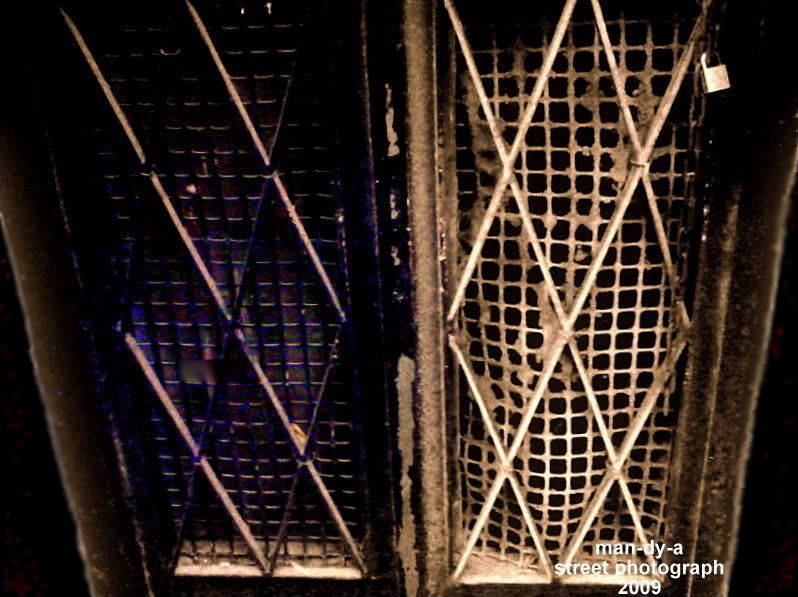
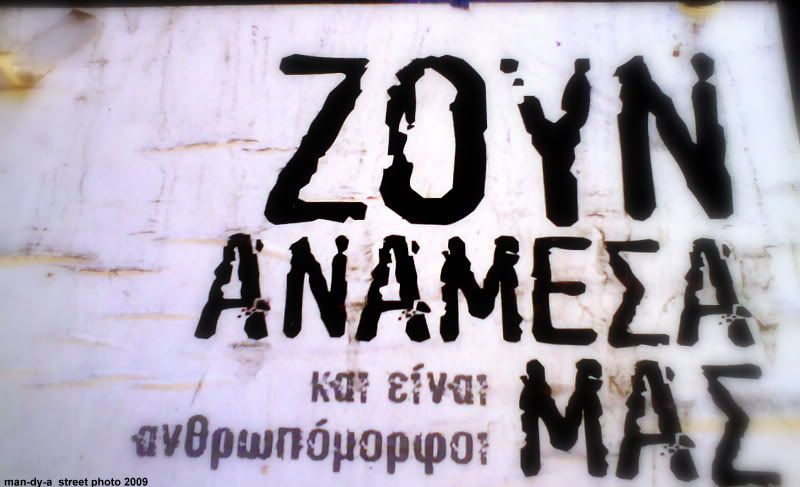




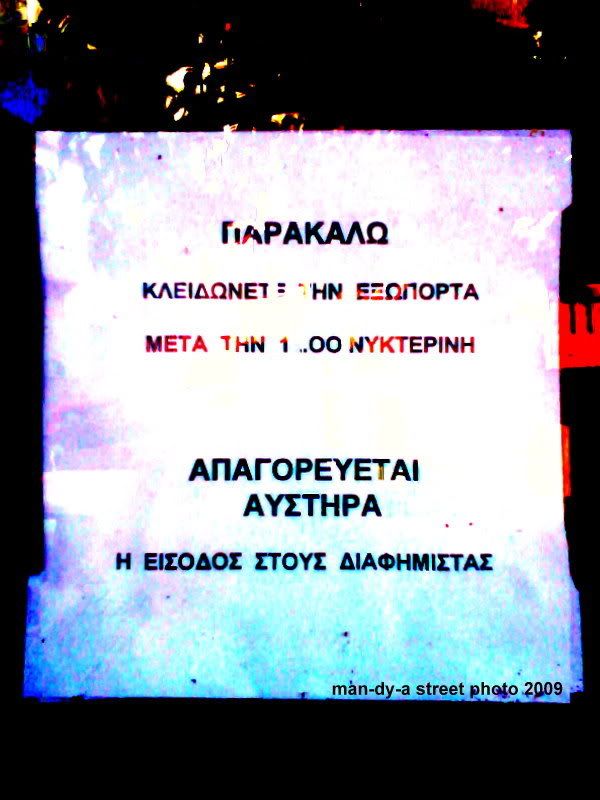
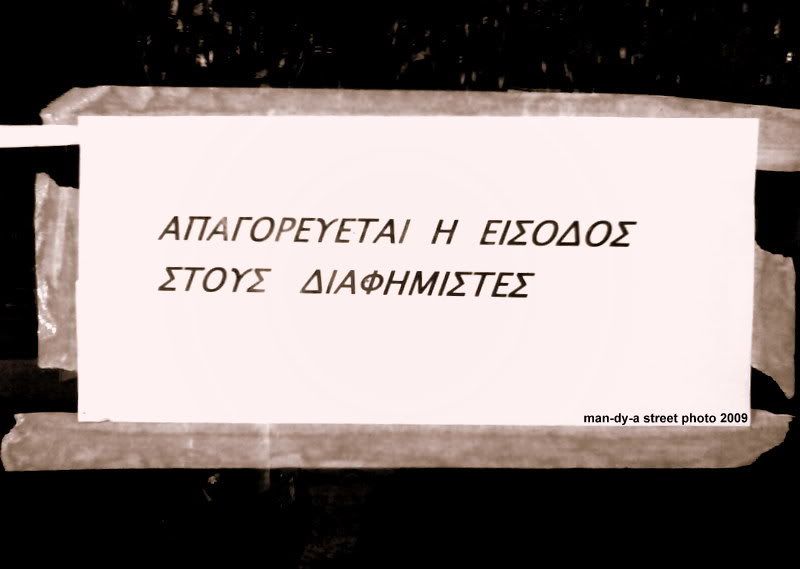











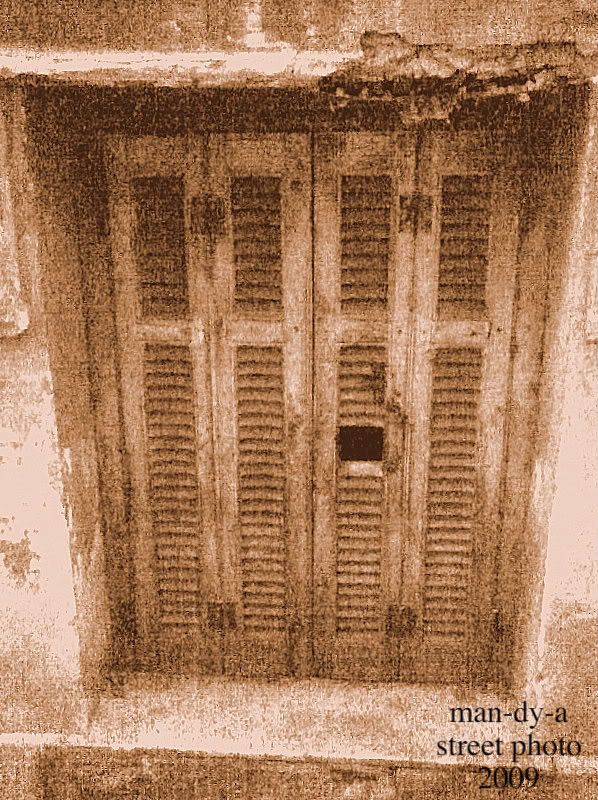
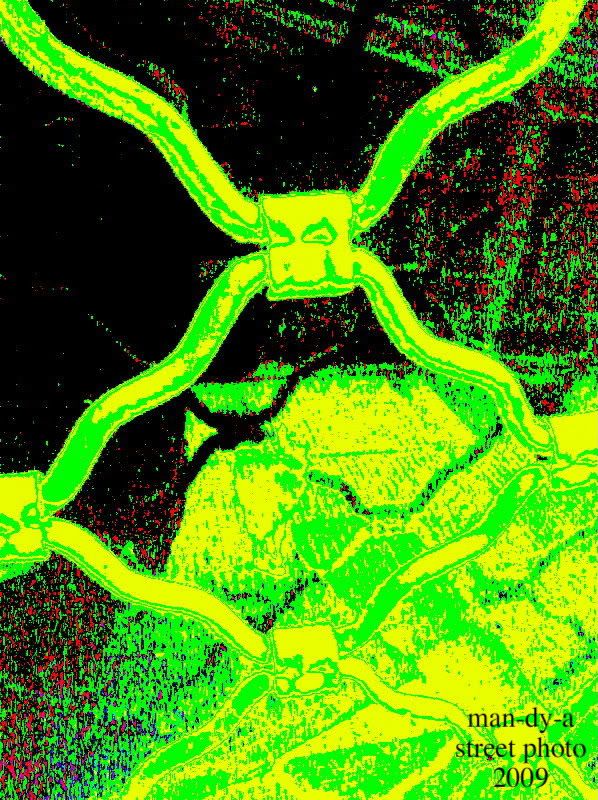

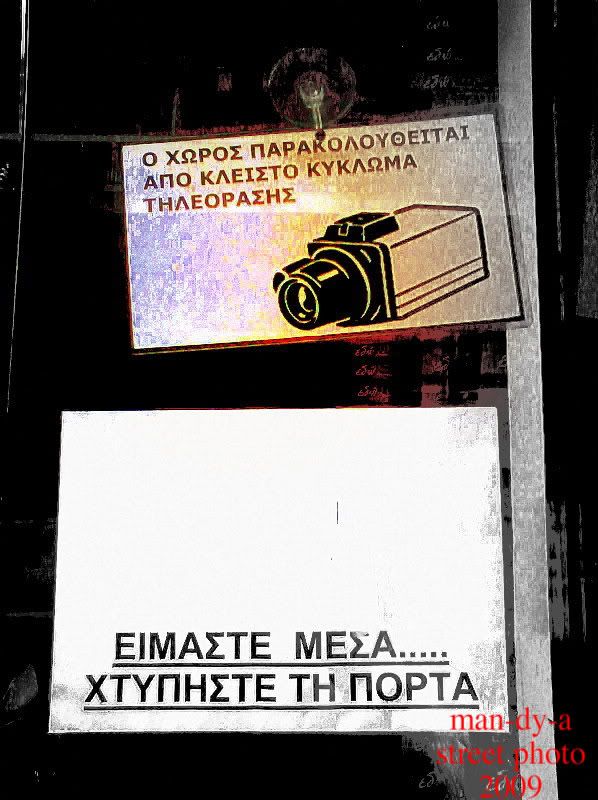


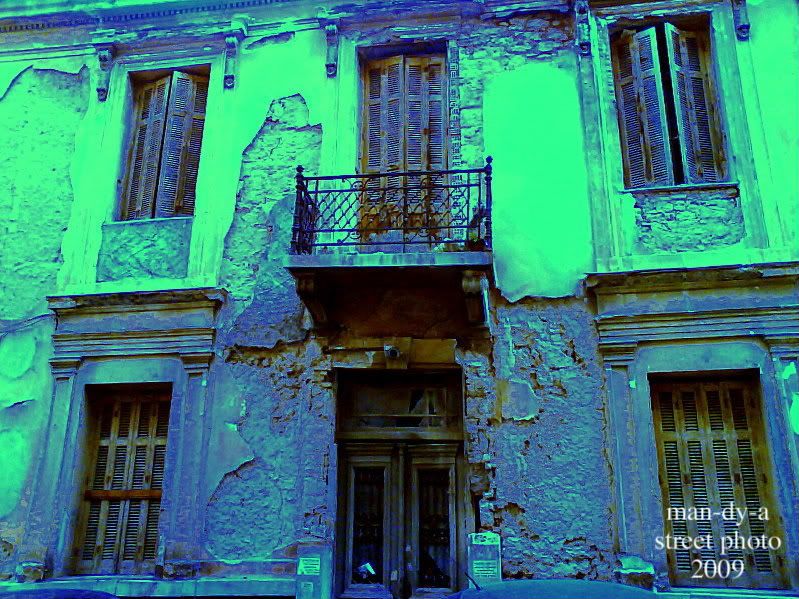
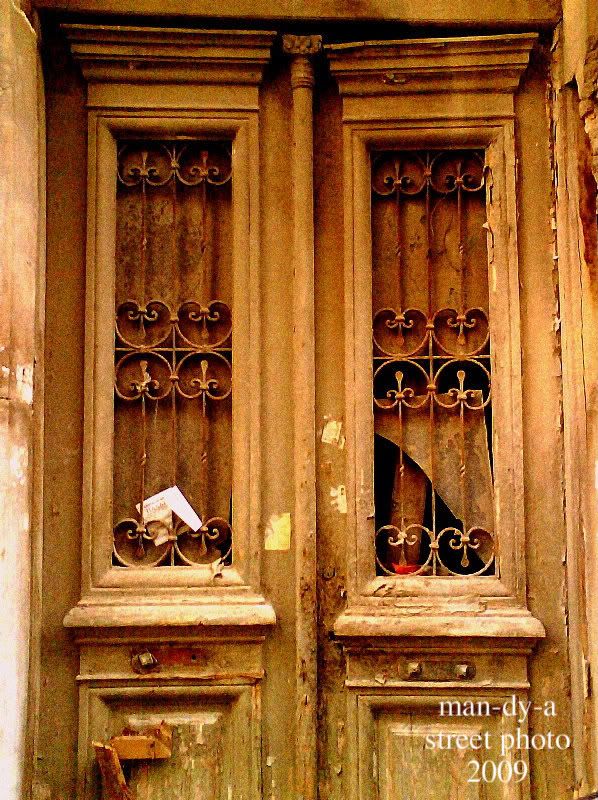





Οι φωτογραφίες που έβγαλα είναι μόνο από ένα οικοδομικό τετράγωνο! Μπορείτε να φανταστείτε τι γίνεται τη νύχτα, με τα φώτα της πόλης να υπενθυμίζουν πως αυτή η σιωπηλή αρένα βρίσκεται στην πολυπληθέστερη πόλη του κόσμου. Μια σκοτεινή δύναμη που φωλιάζει μέσα της έχει γίνει πια αναπόσπαστο μέρος της και την υποτάσσει απόλυτα στη θέλησή της. Κατάφερα να αιχμαλωτίσω στο ελάχιστο την ψυχή αυτής της πόλης με μερικές φώτο και ανακάλυψα πως η καρδιά της δεν είναι τα σκοτεινά και γεμάτα μυστήριο κτίρια αλλά οι κάτοικοι της, που διαφέρουν κατά πολύ από τους κατοίκους άλλων πόλεων που έχω ζήσει. Οι κάτοικοι της Κυψέλης ζουν με το φόβο και την καχυποψία, επιρεασμένοι βαθιά από την ενέργεια που λαμβάνουν μέσα από τα κτίρια που κατοικούν. Είναι ιδιαίτερα απαθείς και απρόσιτοι, τα μάτια τους και τα πρόσωπά τους δεν τα έχω δει ποτέ χαμογελαστά. Η πόλη μοιάζει σαν μια μαύρη βασίλισσα που σιχαίνεται να θυμάται τα σφάλματά της, σηκώνει το κεφάλι τη νύχτα και ουρλιάζει διαπεραστικά σε θεούς και δαίμονες...
Kάντε κλικ στις φώτο για να τις δείτε μεγαλύτερες.
































Εγγραφή σε:
Αναρτήσεις (Atom)




